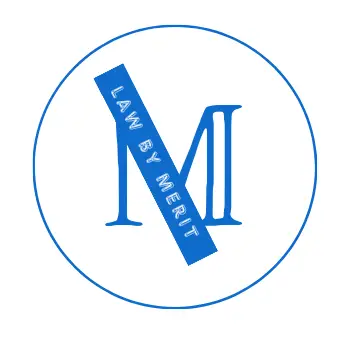In the realm of legal proceedings, a plaintiff’s original petition holds a pivotal role, serving as the foundational document initiating a civil lawsuit. This document serves to articulate the grievances, claims, and relief sought by the plaintiff against the defendant. In this comprehensive analysis, we delve into the intricate details of the plaintiff’s original petition, exploring its significance, components, and procedural implications.
Significance of Plaintiff’s Original Petition:
The plaintiff’s original petition serves as the cornerstone of a civil lawsuit, setting forth the allegations and legal basis upon which the case is built. It encapsulates the plaintiff’s narrative, delineating the factual background, legal theories, and remedies sought. This document not only initiates the legal process but also provides crucial notice to the defendant regarding the nature and scope of the claims asserted against them. Furthermore, the plaintiff’s original petition establishes the parameters within which subsequent legal proceedings unfold, shaping the trajectory of the case from inception to resolution.
The plaintiff’s original petition, often referred to simply as the “petition” or “complaint,” serves as the initiating document in a civil lawsuit. It is filed with the appropriate court and formally notifies the defendant of the plaintiff’s claims and demands for relief. This document plays a crucial role in outlining the factual and legal basis of the plaintiff’s case and sets the stage for the ensuing legal proceedings. See a sample here.
Components of Plaintiff’s Original Petition:
1. Caption: The caption of the petition includes essential information such as the names of the parties involved, the court in which the lawsuit is filed, and the case number.
2. Jurisdictional Allegations: This section outlines the basis for the court’s jurisdiction over the subject matter and the parties involved in the lawsuit. It specifies the legal authority under which the claims are brought.
3. Factual Allegations: Here, the plaintiff narrates the events giving rise to the dispute, presenting a chronological account of relevant facts and circumstances. These allegations serve as the factual foundation upon which the legal claims are predicated.
4. Legal Claims: The plaintiff articulates the legal theories and causes of action against the defendant, citing applicable laws and precedents to support their assertions. Common types of legal claims include breach of contract, negligence, fraud, and various statutory violations.
5. Prayer for Relief: This section delineates the specific remedies sought by the plaintiff, which may include monetary damages, injunctive relief, declaratory judgment, or specific performance. The prayer for relief reflects the ultimate objectives of the lawsuit and the desired outcome from the court.
6. Signature and Verification: The petition is typically signed by the plaintiff or their attorney, certifying the truthfulness and accuracy of the allegations presented. In some jurisdictions, verification by oath or affirmation is required to affirm the authenticity of the claims asserted.
Procedural Implications:
The filing of a plaintiff’s original petition initiates the formal commencement of the lawsuit, triggering various procedural deadlines and requirements. Upon receipt of the petition, the defendant must respond within a specified period, typically by filing an answer or motion to dismiss. Failure to timely respond may result in default judgment against the defendant, wherein the court may rule in favor of the plaintiff based solely on the allegations presented.
Moreover, the plaintiff’s original petition serves as a roadmap for subsequent legal proceedings, guiding the discovery process, motion practice, and trial preparation. It provides a framework for the presentation of evidence and legal arguments, facilitating judicial resolution of the underlying dispute.
In summary, the plaintiff’s original petition represents a foundational document in civil litigation, embodying the plaintiff’s claims, grievances, and objectives. Through its careful crafting and presentation, the petition sets the stage for the adjudication of the dispute, shaping the course of legal proceedings and ultimately influencing the outcome of the case.
When Can the Plaintiff’s Original Petition be Used?
1. Commencing Legal Action:
The most common use of the plaintiff’s original petition is to initiate legal action against a defendant. Whether it be a breach of contract, personal injury claim, or any other civil dispute, the plaintiff files the petition with the court to officially launch the lawsuit. This document outlines the plaintiff’s grievances, allegations, and desired remedies, providing the defendant with formal notice of the claims asserted against them.
2. Asserting Legal Claims:
The plaintiff’s original petition serves as a vehicle for asserting various legal claims against the defendant. These claims may encompass a wide array of issues, including but not limited to breach of contract, negligence, fraud, defamation, wrongful termination, and discrimination. By clearly articulating the legal theories and causes of action, the petition delineates the scope of the plaintiff’s case and forms the basis for subsequent legal arguments and proceedings.
3. Seeking Relief and Remedies:
Another crucial function of the plaintiff’s original petition is to outline the relief and remedies sought by the plaintiff from the court. This may include monetary damages, injunctive relief, specific performance, declaratory judgment, or any other form of legal redress deemed appropriate under the circumstances. The prayer for relief section of the petition specifies the desired outcome of the lawsuit and guides the court in fashioning an appropriate remedy if the plaintiff prevails.
4. Providing Notice to the Defendant:
The filing of the plaintiff’s original petition serves as formal notice to the defendant of the claims and allegations asserted against them. This not only triggers the defendant’s obligation to respond but also initiates the legal process whereby the parties engage in discovery, motion practice, and ultimately trial preparation. The petition sets the parameters of the dispute and establishes the framework for the resolution of the case through judicial proceedings.
5. Setting the Stage for Litigation:
Beyond its immediate function of commencing legal action, the plaintiff’s original petition also sets the stage for subsequent litigation. It serves as a roadmap for the parties and the court, guiding the progression of the case through various procedural stages. From the initiation of discovery to the presentation of evidence at trial, the allegations and claims asserted in the petition shape the trajectory of the litigation and influence the ultimate outcome of the case.
In conclusion, the plaintiff’s original petition plays a pivotal role in civil litigation, serving as the cornerstone upon which legal action is initiated and pursued. Its multifaceted uses and applications extend beyond mere commencement of legal proceedings, encompassing the assertion of claims, seeking relief, providing notice to the defendant, and shaping the trajectory of litigation. Understanding the significance of the plaintiff’s original petition is essential for navigating the complexities of civil litigation and advocating effectively on behalf of clients in pursuit of legal redress.
RELATED:
- https://lawbymerit.com/how-to-get-a-copy-of-paternity-test-results-and-where-to-get-it/
- https://lawbymerit.com/when-is-property-considered-abandoned-after-divorce/
- https://lawbymerit.com/can-a-representative-payee-live-in-another-state/
- https://lawbymerit.com/order-of-location-got-call-about-order-of-location/
FREQUENTLY ASKED QUESTIONS
1. What is a plaintiff’s original petition, and why is it important in a lawsuit?
– A plaintiff’s original petition is a legal document filed by the party initiating a civil lawsuit (the plaintiff) against the defendant. It outlines the plaintiff’s grievances, factual allegations, legal claims, and requested relief. This document is crucial as it formally commences the legal action, provides notice to the defendant, and sets forth the framework for the subsequent litigation process.
2. What information should be included in a plaintiff’s original petition?
– A plaintiff’s original petition typically includes:
– Identification of the parties involved (plaintiff and defendant).
– Jurisdictional allegations specifying the court’s authority to hear the case.
– Factual allegations detailing the events giving rise to the dispute.
– Legal claims or causes of action asserted against the defendant.
– Prayer for relief, outlining the specific remedies sought by the plaintiff.
– Signature and verification by the plaintiff or their attorney.
3. When can a plaintiff file a original petition?
– A plaintiff can file an original petition once they have gathered sufficient evidence to support their claims and have identified the defendant against whom they wish to bring the lawsuit. There may be specific statutes of limitations or procedural requirements dictating when a lawsuit must be filed, depending on the jurisdiction and the nature of the claims involved.
4. What happens after a plaintiff files an original petition?
– After filing the original petition, the defendant must be served with a copy of the petition and summons, officially notifying them of the lawsuit. The defendant then has a designated period to respond, typically by filing an answer to the petition or a motion to dismiss. The litigation process progresses through various stages, including discovery, pre-trial motions, and ultimately trial if the case is not resolved through settlement or alternative dispute resolution.
5. Can a plaintiff amend their original petition after it has been filed?
– Yes, a plaintiff generally has the right to amend their original petition to correct errors, add new claims or parties, or make other modifications to the pleadings. However, there may be procedural rules governing the timing and manner of amendments, and the court’s permission may be required in certain circumstances. It’s important for plaintiffs to consult with their attorney and follow the appropriate procedures when seeking to amend their pleadings.
Last updated on: April 11, 2024




